|
"Let
us now praise famous men..."
Ecclesiasticus
44:1-15
Granville Levison Gower
(1773-1846)
"....for the steelmen of
Stoke-on-Trent, the most significant [event] must have been the
blowing in of three blast furnaces on the Shelton site in the
Mid-Nineteenth Century.
Work on the furnaces began in 1839; the first iron was tapped in
early January 1841.
Shelton had been born - A tradition had begun."
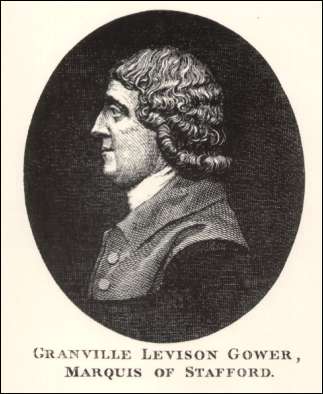
Granville
Levison Gower
1st Earl Granville Marquis of Stafford
1773-1846
"If industry grows strong through the
collective abilities of thousands of me, it is born because of the
vision of individuals." anon...
For one industry in
Stoke-on-Trent that individual was Granville Levison Gower.
Born at a time when the industrial revolution was in its infancy, he
grew up in an atmosphere of great change and development in the iron
industry. In 1815 he was elevated to the peerage and created an
Earl.
That same year his son was born, named George, who was to take over
the running of Shelton on his father's death in 1846. The first Earl
leased a tract of land from the Duchy of Lancaster. This land was
adjacent to the Trent and Mersey Canal.
His immediate neighbour was
another man of vision, Josiah Wedgwood. His factory had been in
existence since 1866 and Josiah had not only built a factory, but
also a small village to house his employees.
He named the village Etruria after the area in Italy where the clay
came from to make the distinctive blue and white china which is so
famous today.
Earl Granville built has
first three blast furnaces on a site between Cobridge Road and Mill
Street (later to become Etruria Road), in the Shelton Parish, which
gave the works its name.... "Shelton Bar"

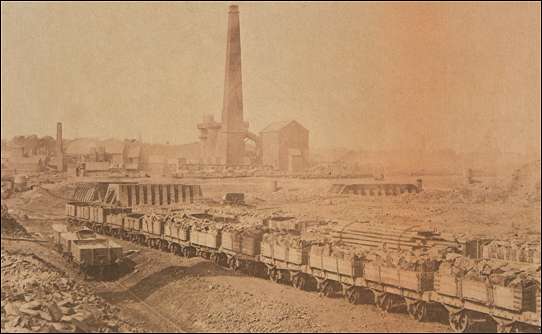
The first three
blast furnaces to be built on the Shelton site
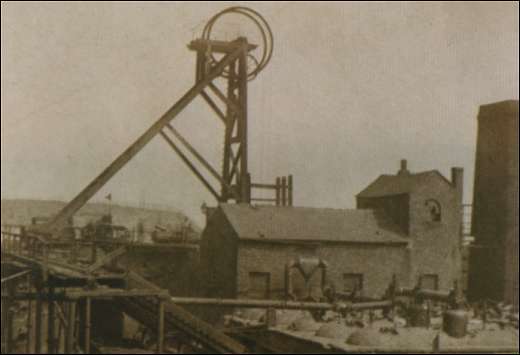
Rowhurst No. 2 Pit
The rich seams of coal and iron ore
in the Stoke-on-Trent area were instrumental in the selection of the
Shelton site by the first Earl Granville.
There were numerous coal workings on the Shelton site before the
Levison Gower family took an interest in it but after the lease was
taken up the pits were rapidly developed.
They were all part of the unique
industrial fabric of North Staffordshire. Coal pits were peppered
around the Shelton site.
There was The Grange; the three
Racecourse pits; Rowhurst One and Two; Bootham Pit, Tinkersclough
and the 'daddy' of them all, Deep Pit.
Deep Pit got its name from the fact
that it had the area's deepest shaft, reaching 1,500 feet. The
Racecourse pits, named after a racecourse which saw its last event
in 1840, were almost 1,000 feet deep.

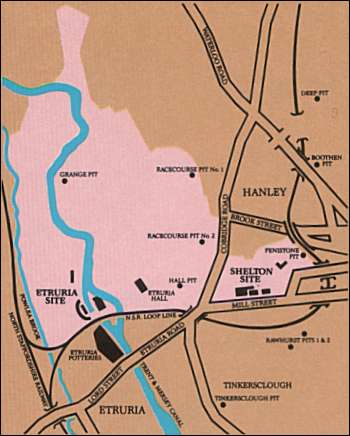
expansion of
the Shelton Works
this map
shows the location of Wedgwood's pottery works
The Shelton Iron & Steelworks site is shown in pink
Dramatic increases in activity took
place in the 1850-55 period. A further four blast furnaces were
built at the Etruria site, to take the total to eight. A fourth had
been built alongside the original three in the Shelton site.
Ironmaking was to take place on this
second site without interruption until 1978.
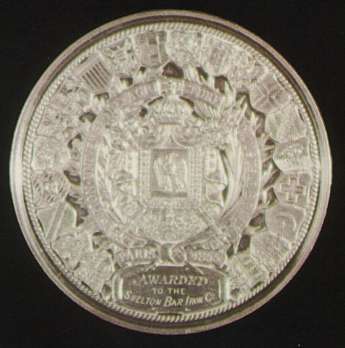
Silver Medal, Paris 1855
Quality was as important in the
Nineteenth Century as it is in the Twentieth Century. Competing
against the rest of the world in 1855, the Shelton Bar Iron Company
won the Silver Medal for wrought iron quality at the Paris
Exhibition.

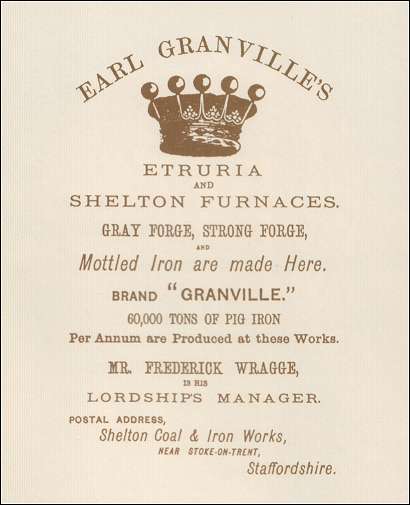
For the first
three decades of its life of the Shelton site was under continual
expansion.
Locally-mined ore
was mixed with that from nearby Froghall to improve its quality
until coke replaced coal as a fuel. The ore from South Wales and the
north of England was then used instead.
This continual
expansion was to reach its next significant milestone in 1866, with
the decision to form a private limited company. On July 10th that
year the Shelton Iron and Steel Company Ltd was registered. It had
capital of £250,000 in 250 shares each worth £1,000, of which the
Earl Granville held 77.
He also held on,
very firmly, to the blast furnaces, which continued to operate under
his direct ownership.
Although he traded under the name Earl Granville, the two separate
sides of the organisation appear to have been operated as one unit.
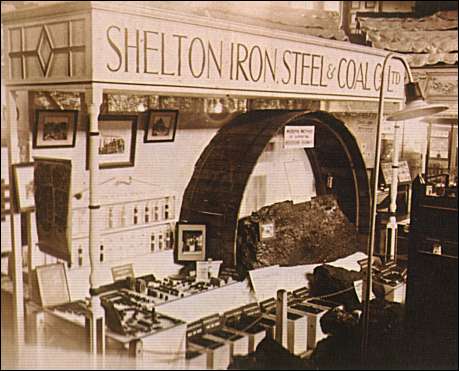
Early exhibition stand for the Shelton
Iron, Steel and Coal Co. Ltd.
 |
![]()
![]()
![]()